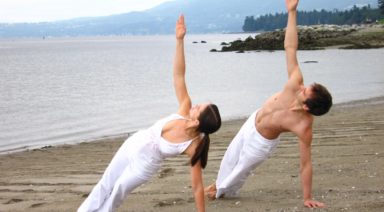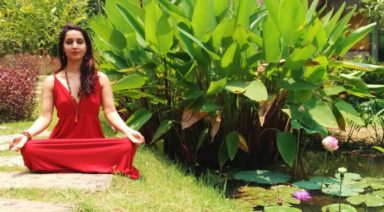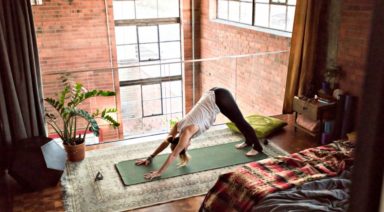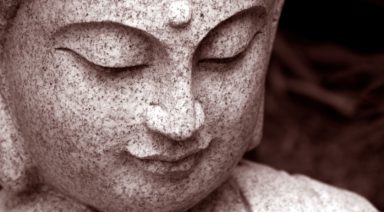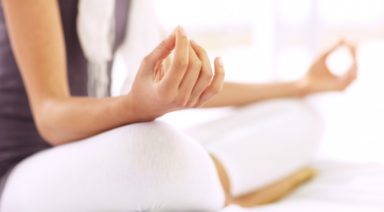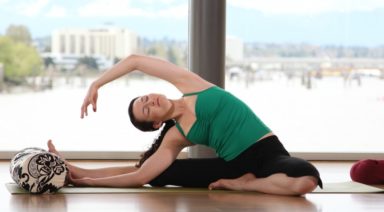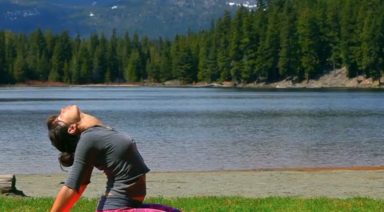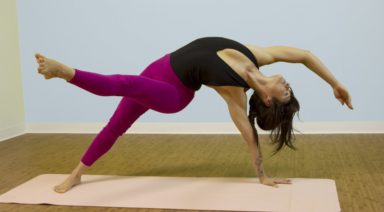5 Tips to Reclaim Your Calm

Stress and anxiety have become everyday realities, especially over the last year. In fact, a survey conducted in 2020 reported that 62% of adult respondents reported experiencing anxiety on a regular basis. But what if it didn’t have to be that way?
Yoga, breathwork, and meditation can create a foundation of synchronicity in your body that allows you to regain control of your life in a way that calms your sympathetic nervous system (fight or flight response) and supports an overarching sense of calmness in our chaotic world.
These practices, while not a panacea for anxiety, can improve stress response, and have been clinically proven to do so. A recent study at New York University Grossman School of Medicine discovered that in a group of randomly selected people with Generalized Anxiety Disorder (GAD), 54% met the criteria for “meaningfully improved symptoms,” after practicing yoga.
So, what can you do to reclaim a peaceful mind and life? Here are 5 tips to get you started:
1.) Develop a regular physical yoga practice (or re-commit if you already have one)
All types of physical exercise are beneficial for decreasing stress response by improving the health of the cardiovascular system (also potentially reducing the risk of heart disease) and releasing endorphins. Yoga, however, offers a special twist of calmness and relaxation while still allowing an exertion of physical effort, creating a fertile environment to build self-awareness through mindful movement.
Because of the flexibility and strength gained through regular practice, joint and muscle pain may also be soothed through a physical yoga practice (also called Asana) by reducing stressors related to pain responses in the body. Over time, and with dedicated practice, these benefits add up dramatically, even to the point of correcting scoliosis or reducing heart palpitations. Vinyasa or Yin yoga are generally the most beneficial practices for these physical benefits.
One common misconception about yoga is that you must practice for an hour to benefit. This fallacy was derived from the fact that studio classes often run for an hour. Any amount of time spent practicing physical yoga counts, whether it be 10, 60, 90 minutes, or more!
2.) Practice 5-10 minutes of breathwork
Breathwork (or Pranayama) can be easily overlooked, even by seasoned yoga practitioners, but it is one of the most beneficial aspects of your practice. How we breathe is often directly correlated to how we feel; short and shallow breathing makes us feel closed off and more anxious, whereas long, mindful breathing creates a sense of abundance, while also promoting a more meditative and mindful state. Taking as few as five minutes a day to breathe deeply and mindfully can literally re-oxygenate the mind and body. This allows more clarity and direction in everyday scenarios, and (with the use of some specific practices, like this one), can create a space of time between a personal cause and retort, transforming reactions into more thoughtful responses.
3.) Meditate regularly, around 5-20 minutes a session
Meditation allows time to be truly present in the moment in a society that regularly demands you to be two steps ahead. This simple practice can build a foundation of focus through watching your thoughts and releasing them for several minutes at a time. This “letting go” of thoughts can bridge into your life and allow you to more easily brush off unnecessary stressors that are not your burden to bear – keep in mind that not all things should be let go of outside of meditation, like important tasks and meaningful personal relationships, though these things should be put to the side or temporarily released while sitting in practice. Meditation has even been linked to releasing somatic trauma through envisioning the release of old, unnecessary tensions on out-breaths.
Time spent seated in practice is never perfect, but the dedication of returning to the breath and calmness of the mind is an aspect of the discipline that accumulates like a muscle, eventually growing so deeply rooted within that calmness becomes a way of life. Guided meditations can be helpful in building technique and purpose to what sometimes feels unachievable or like “just sitting there.”
4.) You don’t need to do it all
Taking on all of these practices at once may be more overwhelming than helpful. Some of the above techniques work better for some than others, so choose the ones that work for you and stick with them. The best healing comes from heartful practice and awareness of self, so give yourself permission to accept that which allows you to sink into your peacefulness.
5.) Don’t be hard on yourself if you miss a day (or two)
Life is busy, that is a fact. Adding extra stress on yourself for “squeezing in” practice or beating yourself up for missing a day is akin to adding insult to injury. It is okay to miss a day of your chosen practice (or practices). As someone who used to do this regularly, I have developed the idea of “daily-ish” practice, which allows me to be tender with myself if I am too tired, busy, or just plain out of it. Try to not take more than two days off in a row, though, to stay in a flow and continue filling your inner cup of calm.
Over time, dedication to one or more of these practices will create a cushion for real-world stressors by strengthening your mental state and regulating your sympathetic nervous system’s response, while also giving you a fully stocked toolbox of techniques to utilize when things get heated in life.
Remember above all else, these are all practices… you are not supposed to be perfect at them, but being perfectly imperfect allows compassion towards yourself in all of life’s trials and tribulations.
When all else fails, take a deep, mindful breath to reset and recall the essence of practice to soothe some tension.
You’ve got this.
What is the Meaning of Om?

“In the beginning was the Word, and the Word was with God, and the Word was God.” It is a particularly human trait to be curious about our origins, and the origins of our universe. How could so much – the diversity of our planet, the vastness of our solar system, the unknown reaches of space – come from nothing? Spiritual traditions from all over the world have grappled with this question, and have recognized the profound role of the Divine Word as the origins, the beginning, of the universe. If at first there was nothing, the very first thing was a sound vibration, and from there, everything sprang into existence, and the material world was born. And Western science is now coming on board as well: quantum physicists have been studying the role of vibration at the root of matter itself.
Nikola Tesla said, “If you want to find the secrets of the universe, think in terms of energy, frequency and vibration.” The very foundations of our Universe, of matter and thought, appear to lie in sound vibration.
And from a yogic perspective, there is a profound connection between speech (the expression of our thoughts) and prana (the life energy carried on the breath). When we speak, we are naming our reality while using the power of the breath to form and express our words. Speech is prana in action. Prana naturally creates sound.






